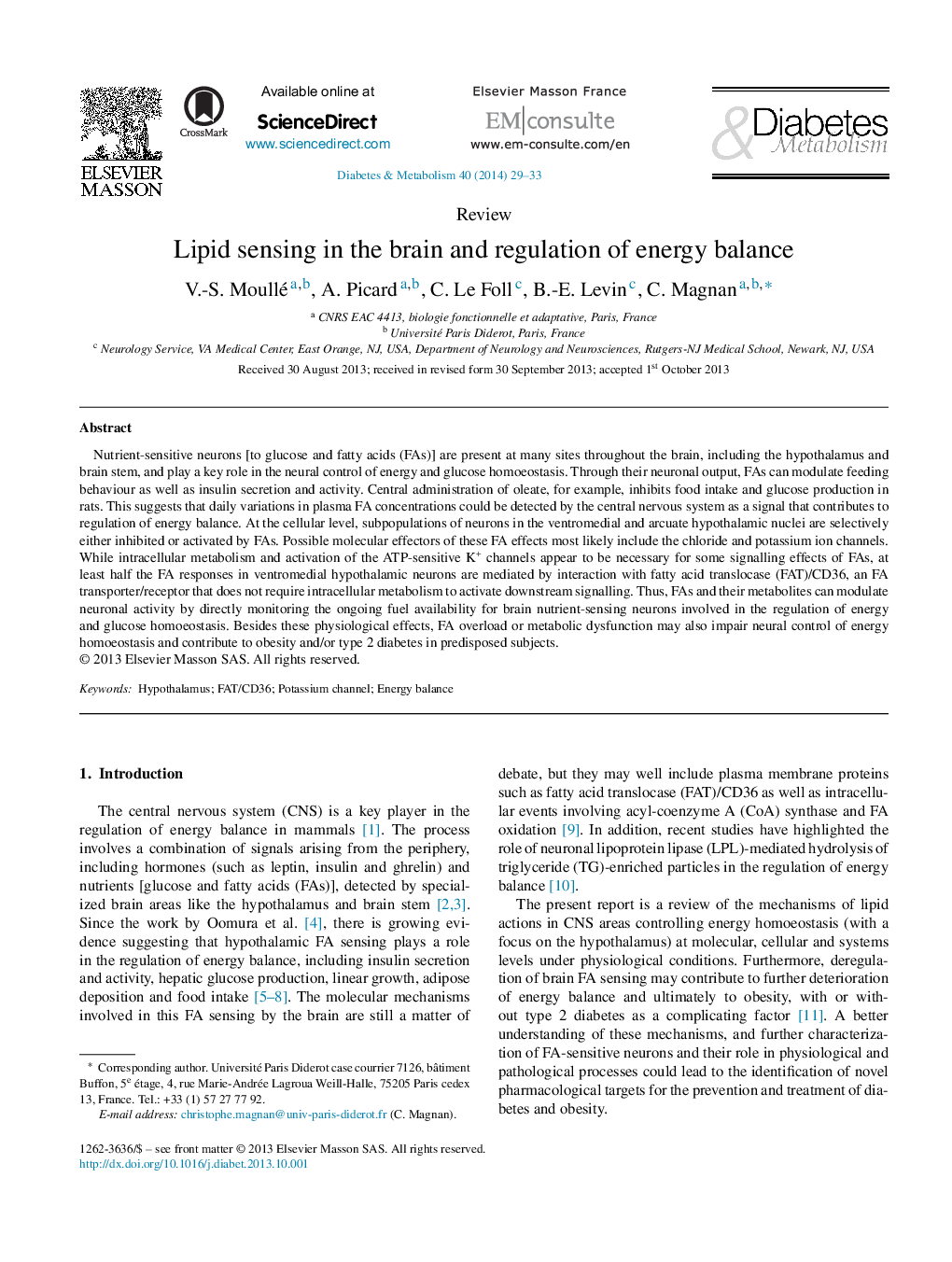| Article ID | Journal | Published Year | Pages | File Type |
|---|---|---|---|---|
| 3259386 | Diabetes & Metabolism | 2014 | 5 Pages |
Nutrient-sensitive neurons [to glucose and fatty acids (FAs)] are present at many sites throughout the brain, including the hypothalamus and brain stem, and play a key role in the neural control of energy and glucose homoeostasis. Through their neuronal output, FAs can modulate feeding behaviour as well as insulin secretion and activity. Central administration of oleate, for example, inhibits food intake and glucose production in rats. This suggests that daily variations in plasma FA concentrations could be detected by the central nervous system as a signal that contributes to regulation of energy balance. At the cellular level, subpopulations of neurons in the ventromedial and arcuate hypothalamic nuclei are selectively either inhibited or activated by FAs. Possible molecular effectors of these FA effects most likely include the chloride and potassium ion channels. While intracellular metabolism and activation of the ATP-sensitive K+ channels appear to be necessary for some signalling effects of FAs, at least half the FA responses in ventromedial hypothalamic neurons are mediated by interaction with fatty acid translocase (FAT)/CD36, an FA transporter/receptor that does not require intracellular metabolism to activate downstream signalling. Thus, FAs and their metabolites can modulate neuronal activity by directly monitoring the ongoing fuel availability for brain nutrient-sensing neurons involved in the regulation of energy and glucose homoeostasis. Besides these physiological effects, FA overload or metabolic dysfunction may also impair neural control of energy homoeostasis and contribute to obesity and/or type 2 diabetes in predisposed subjects.
